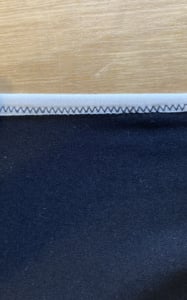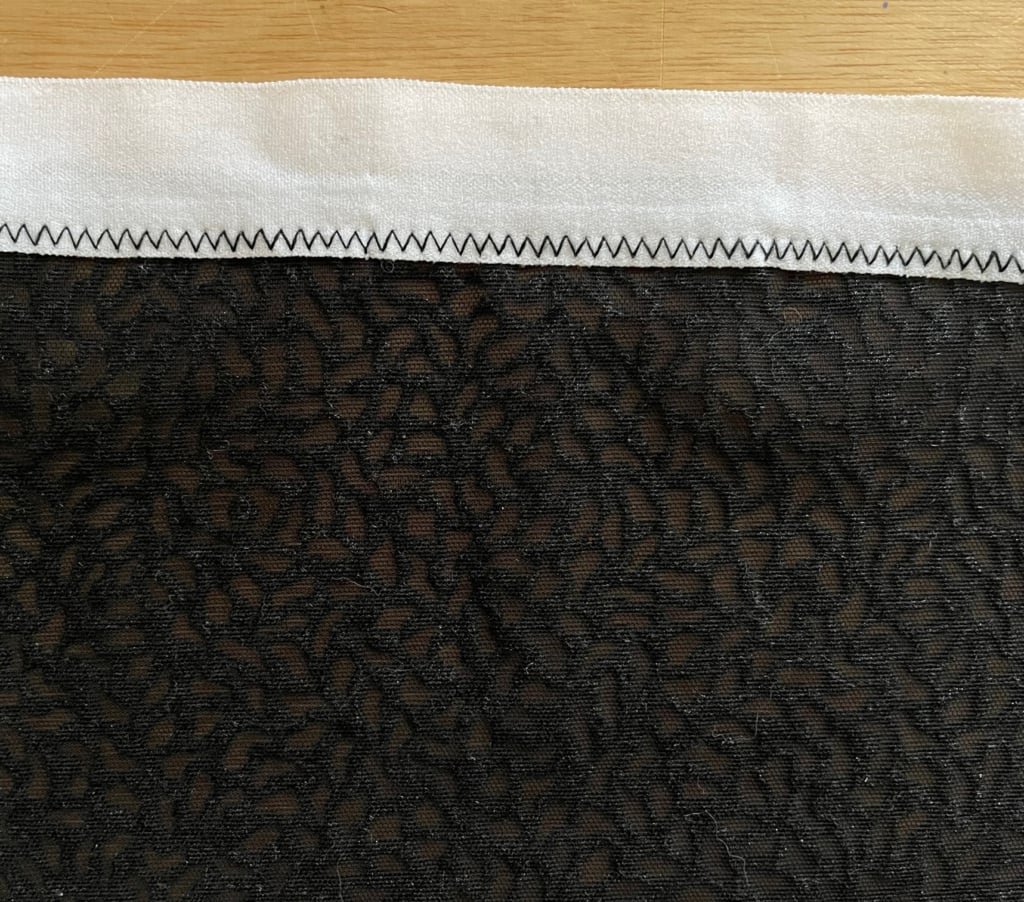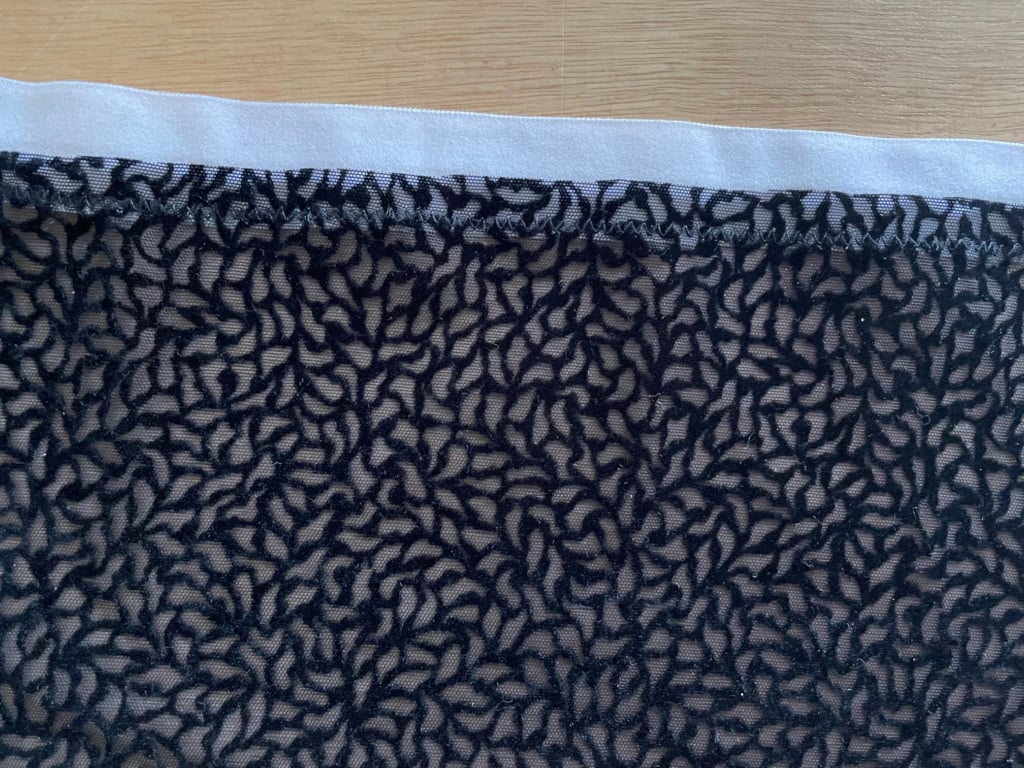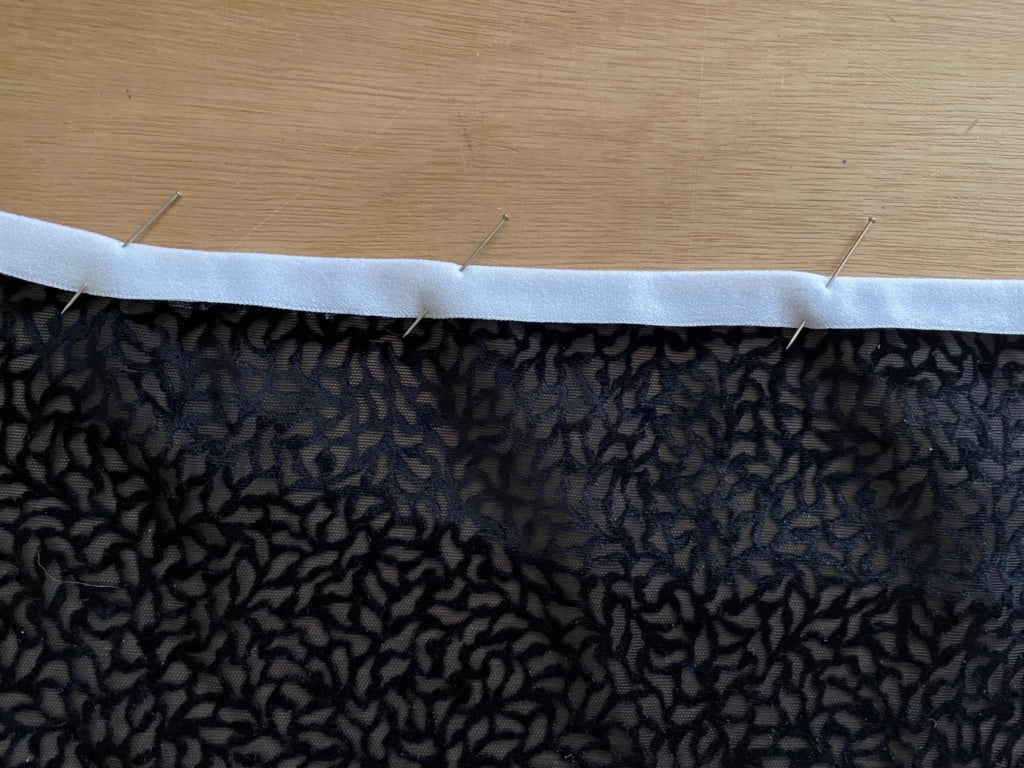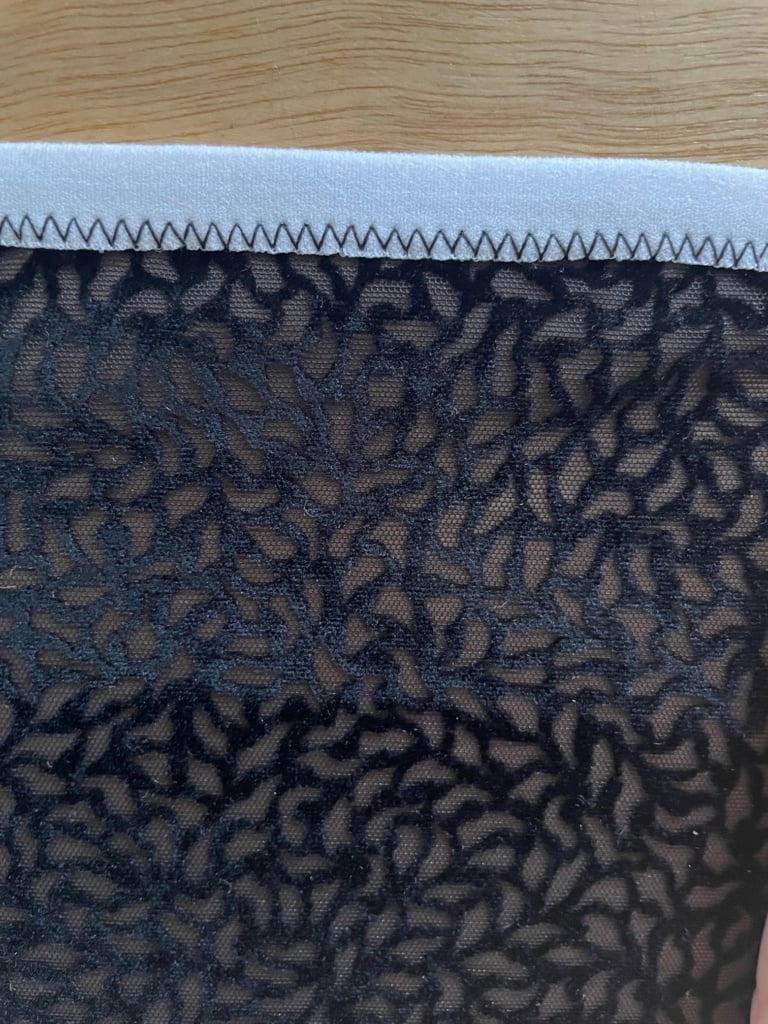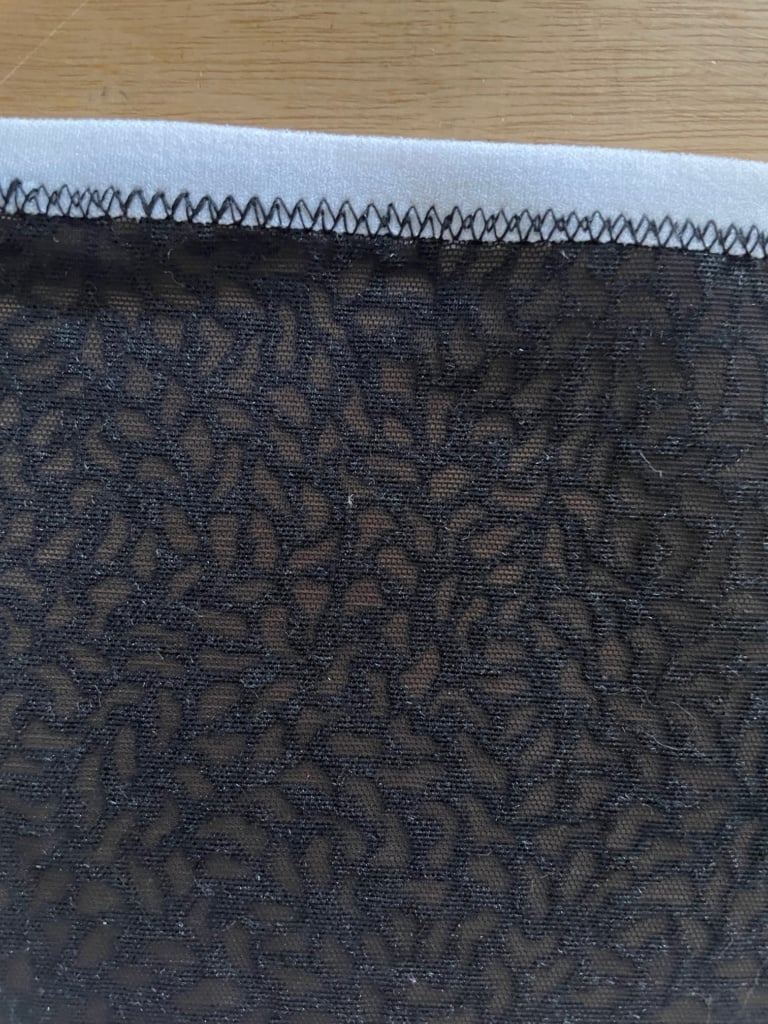Sewing elastic is often a source of apprehension when you start making lingerie. However, with the right method, this step is easier than you think.
Before moving on to assembly techniques, here are a few points to bear in mind for any part incorporating elastic.
- Always use the type of elastic and width recommended by your pattern **.
- Measure the width of the elastics, not including the decorative parts (festoons, picots, etc.).
- When sewing, it's important to 'stretch' the elastic to prevent your seams from yawning. Be careful not to put tension on the fabric underneath.
** We have written a special article on elastics. It will help you identify the different types of elastic used in the creation of lingerie pieces and their applications. It's easy to lose your head when you see the variety of elastics you can find!
Let's get practical!
How to determine the length of elastic bands to apply
Like stretch fabrics, elastics have the ability to stretch. For all your lingerie, panties, etc., I recommend reducing the elastic by 5-7% in relation to the length of the fabric to which it is to be sewn.
Why not take more? The risk is that the garment will quickly become uncomfortable. The pattern has already been made with a reduction coefficient, for example 8% for knickers and 12-15% for a swimming costume.
The elastic will already have to stretch by at least 8 - 15% + the stretch required to be able to put on the garment + the 5-7% reduction applied during fitting. You can take more than 7%; the fabric will be 'more' gathered, but be careful not to stretch the elastic too much - or you'll end up wearing it too tightly.
Using a tape measure, measure on the pattern the different lengths of the pieces to which the elastic will be applied. I advise you not to measure the lengths directly on the fabric, as some textiles deform very easily (especially stretch fabrics), which can significantly distort the result. With a little practice, you'll soon be able to work out the tension to apply to your elastic as you sew it on.
- To reduce the length of a 7%, proceed as follows:
Length of elastic in cm = measured length in cm X 0.93
Cut the elastic to the calculated length, adding the seam allowances at each end.
Sew decorative elastics (with picots, festoons, etc.)
- The stitching values to be applied should correspond to the width of the elastic without the picots or scallops.
- Measure and cut the length of elastic required.
- Position and pin the right side of the elastic against the right side of the fabric, distributing the embu* evenly. If the elastic has a soft side, this is the reverse side. Pay attention to the orientation of the pins (see photo below).
- Assemble the elastic with a zig-zag stitch, sewing flush with the pins.
- If necessary, cut the fabric protruding from the elastic to obtain a perfectly clean reverse side.
- Fold the elastic over to the back
- Sew a second zig-zag stitch (or 3-stitch zig-zag) along the edge of the elastic (edge without pins).
Sew on rider/fold over elastic ...
This type of elastic can be sewn in 1 or 2 stages.
1-step assembly

A 1-step assembly gives a nice finish. The finish will be identical on the front and back of the piece; it requires more skill than the 2-step method.
- There are no seam values to apply - seam value = zero.
- Position the elastic, straddling the edge of the fabricspreading out the embu, then pin in place.
- Sew with the zig-zag or stretch stitch sewing machine.
2-step assembly
- Layer the rider elastic over the fabric back to back aligning the edge of the fabric with the longitudinal fold in the middle of the bias.
Sew the 1st seam with a zig-zag stitch 2 mm from the fold without going beyond it.
blog couture élastique cavalier blog couture élastique cavalier Fold the bias back onto the right side of the work, then sew a 2nd time using the zig-zag stitch.
blog couture élastique cavalier blog sewing elastic with pimples blog sewing elastic with pimples It's up to you!
Test on samples before sewing your elastics for good. I also advise you to make a note of the settings you use so that you have reference points in case you forget the next time you sew. Be aware that the type of fabric will have a significant impact on the settings on your machine.






